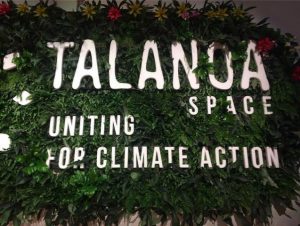
This year opens a new phase for the Paris Agreement and a historic opportunity to jumpstart action to limit the most dangerous impacts of climate change and set the world on course to a carbon-neutral, sustainable future by 2050.
With the official launch of the 2018 Talanoa Dialogue in January, countries are now embarking on the first global assessment of collective efforts to achieve the Paris goals. Global stocktakes are a core part of the regular five-year cycles built into the Agreement to ramp up ambition and action.
Talanoa is a traditional Pacific island term that describes a conversational sharing of ideas and experience that leads to decision-making for the greater good. As envisioned in the recent United Nations climate negotiations led by Fiji, the Talanoa Dialogue aims to build trust and boost ambition, ultimately leading to a commitment by governments to strengthen their Nationally Determined Contributions (NDCs) by 2020 and work with stakeholders at home to identify the best ways forward.
Led jointly by Fiji and Poland, which will preside over this year’s negotiations, the Dialogue will include a preparatory phase and a high-level political phase.
The Dialogue will seek to answer three central questions about climate action:
- Where are we?
- Where do we want to go?
- How do we get there?
A key focus of the conversation will also be the findings of a special report prepared by the Intergovernmental Panel on Climate Change, the leading international body of scientists reviewing research on global warming, expected in October. It will address the impacts of global temperature rise of 1.5 degrees C (2.7 degrees F) above pre-industrial levels and will identify potential pathways to limit warming to that level.
Click here for the full story.
Originally published on the WRI website


